‘Repackaged Urban Renewal’? Research examines starter-home neighborhoods
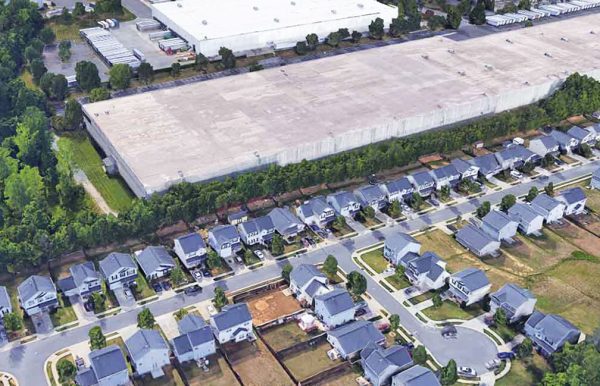
Charlotte saw a boom of low-cost, single-family subdivisions from the late 1990s until a recession hit in 2007. In a new research article, two scholars conclude that many of those subdivisions, touted as “affordable housing,” did not improve life for the lower-income households who moved in.
They characterize the unfortunate outcomes of some of those neighborhoods and the government policies that allowed them as “repackaged Urban Renewal.” (See the full research article from the Journal of Urban Affairs here.
THE SCHOLARS
- Janni Sorensen, an associate professor in the UNC Charlotte Department of Geography & Earth Sciences, teaches community planning and is director of UNC Charlotte’s Charlotte Action Research Project. CHARP works in four challenged Charlotte neighborhoods and previously worked in a starter-home neighborhood, Windy Ridge.
- Melissa Currie has a Ph.D. from UNC Charlotte in Geography and Urban Regional Analysis and is an assistant professor in the Department of Landscape Architecture at Texas Tech University.
Mary Newsom, director of urban policy initiatives at the UNC Charlotte Urban Institute, talked with Currie and Sorensen about their research. That conversation is below the following summary of their research.
HOW THEY DID THE RESEARCH
The study looked at Mecklenburg County single-family-home neighborhoods (no multifamily or mixed uses) built 2000-2010 in the bottom third of the local housing stock, which meant a maximum sales price of $170,000. They used the Charlotte-Mecklenburg Quality of Life Explorer to define and analyze the neighborhoods.
For each of the 80 identified starter-home neighborhoods, they compared median sales prices when the homes were built and the median price of the most recent sales occurring from 2012 through 2014. They looked at neighborhood locations and proximity to undesirable land uses, or LULUs (planner-speak for “locally unwanted land uses.”) They found 100 of those land uses, including toxic waste, railroad transfer yards, a salvage yard, big-box stores, interstate or major highways and high-voltage electrical transmission lines.
The 80 neighborhoods were rated stable or unstable, based on whether home values by 2014 had on average lost less than, or more than, 15 percent of their initial sales price. Forty-four were rated unstable and 36 stable.
AMONG THE RESEARCH FINDINGS
The recent research found:
- A clear pattern that many neighborhoods aimed at lower-income households were built near pre-existing LULUs.
- Of the unstable neighborhoods, 54 percent had been built in industrial locations. Also, 37 percent of unstable neighborhoods were infill development inserted into existing low-income neighborhoods.
- Starter-home neighborhoods built inside the Interstate 485 loop highway had lower median incomes, lower educational attainment, higher densities, higher crime rates, lower rates of homeownership, higher minority populations and lower home values.
- Those outside I-485 were more stable, even if adjacent to a freeway. They had higher median household incomes, higher proportions of white residents and lower rates of subsidized housing.
SOME CONCLUSIONS
- “A core conclusion of our article is that building suburban-style, cookie-cutter infill in/next to existing low-income neighborhoods is not in itself a sustainable solution to the need for affordable housing or an assurance of urban revitalization. …
- “The worst location to place new construction starter home neighborhoods … is within existing, predominantly low-income, inner-ring neighborhoods already challenged on a number of fronts. … Rather than the new construction acting as a catalyst for positive change, the opposite occurred.”
 Map shows locations of stable and unstable starter-home subdivisions. Courtesy Melissa Currie, Janni Sorensen
Map shows locations of stable and unstable starter-home subdivisions. Courtesy Melissa Currie, Janni Sorensen
THE INTERVIEW
Q. What inspired this research and article?
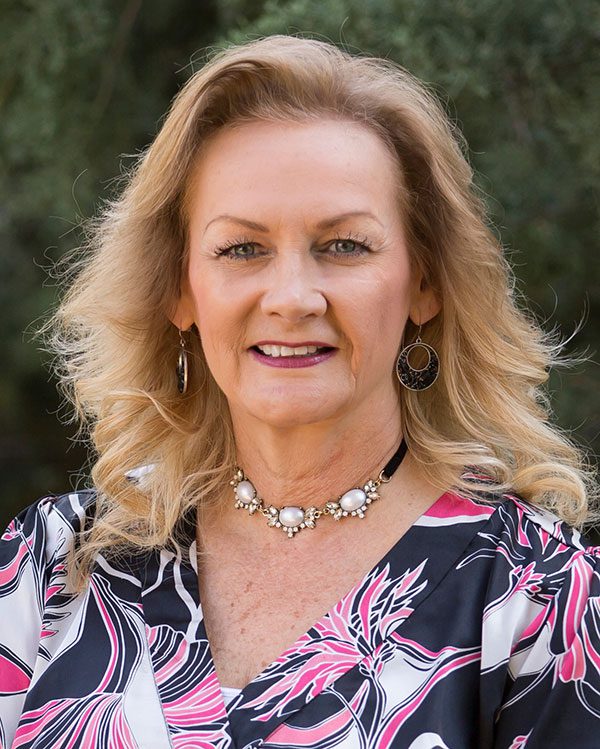 Melissa Currie
Melissa Currie
A. Melissa Currie: When I was at UNC Charlotte doing dissertation research, we were looking at the new construction of starter homes. One thing that really jumped out, as I went door to door interviewing, you could see the homes were near a lot of LULUs, things that negatively impact quality of life, home values. You could see these really large industrial uses looming over the homes. I wanted to investigate the extent of that.
In environmental justice literature there’s been this debate, the chicken and the egg thing: Which came first, the poor neighborhood or the environmental hazard? With new construction that gives you the answer. The pre-existing industrial uses were already there.
A lot of developers were taking little pockets of leftover land that were super cheap, or brownfields, and in some cases getting rezoning from industrial to residential, to put residential development they knew was going to attract lower-income families.
The decade chosen to study was very purposeful – to take neighborhoods that were as similar as possible and compare their trajectories over time (2000-2014) to see how they reacted to the recession. We chose only neighborhoods of single-family detached houses, that started at the same price point, in the same county. We compared where they started from and where they were at the end of 2014. If you take things that start off nearly identical, it gives you a sort of natural, built-in experiment where you’re comparing apples to apples.
I used data from the Quality of Life Explorer and looked at the outcomes on a multitude of variables, everything from educational outcomes, income, jobs. We looked at what kinds of LULUs surrounded the different neighborhoods. They were everything from really large-scale industrial, heavy manufacturing to being adjacent to interstates or major highways to overhead electrical lines. I was shocked by how frequently these huge transmission lines were going right through neighborhoods. They’re really an eyesore, very intrusive on a neighborhood.
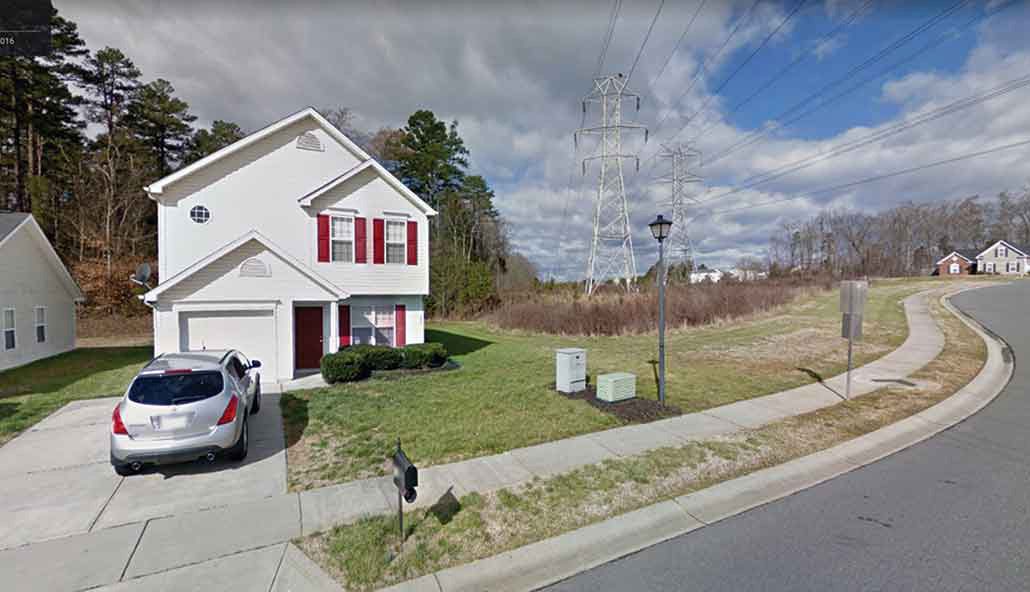 High power electric lines cut through many of the neighborhoods studied, such as this area on Sunman Road in the Oakdale South neighborhood. Photo: Google Earth
High power electric lines cut through many of the neighborhoods studied, such as this area on Sunman Road in the Oakdale South neighborhood. Photo: Google Earth
The neighborhoods were concentrated around all these heavy industrial or manufacturing LULUs. Things like grocery stores and banks were scarce. So you have the dis-amenity, and then you have the lack of positive amenities. It’s a double whammy.
Janni Sorensen: We started recognizing that the concentration of LULUs around some of those developments inside the beltway was much higher than for those outside the belt.
Currie: It was an obvious pattern, which goes back to our crescent-and-wedge pattern in a lot of respects. [The “wedge” is the pattern of comparative affluence and predominantly white Mecklenburg County neighborhoods in a triangular-shaped area to the south of uptown Charlotte, roughly between Interstate 77 and Independence Boulevard. The “crescent” is the arc west, north and east of that wedge.]
Sorensen: With any measure of inequality in Charlotte you see that pattern. It’s segregation racially and by income. The white upper middle class lives in the wedge and by Lake Norman, and people of color and low-income income live in the crescent. Look at any social determinants of upward mobility, school performance, health outcomes, all those measures have that pattern.
Q. You call the starter home development “repackaged urban renewal … islands of suburban-style infill surrounded by decline.” Those are strong words. How and why did you come to that conclusion?
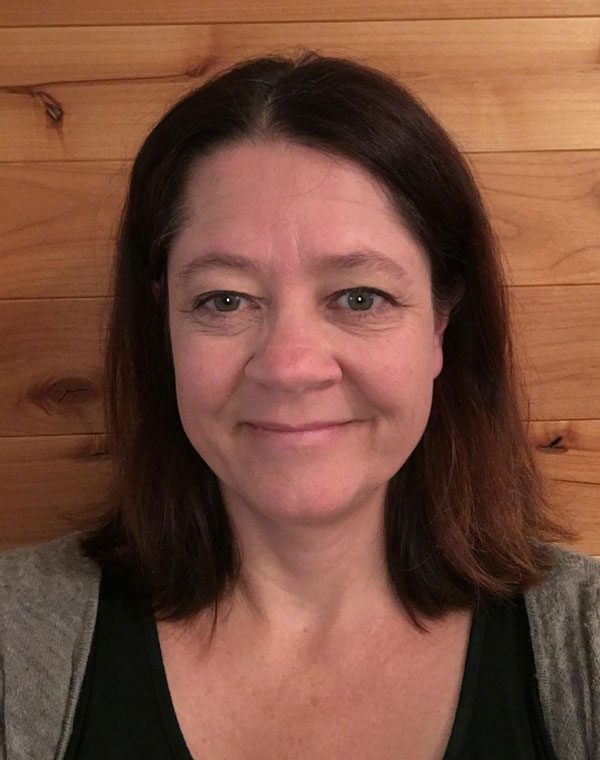 Janni Sorensen
Janni Sorensen
Sorensen: When we think historically of Urban Renewal we think of the destruction of stable neighborhoods, the erasure of black communities, in particular, and pushing people out of stable communities. This is different – but it’s still a disruption of communities of color with an outside intervention that has a negative impact on the existing community.
Very often there’s a narrative that any development in low-income communities is desirable, that the problem is there’s no new investment. But what Melissa’s work demonstrates is that by adding substandard, low-quality, intense development – with little thought about urban design and public spaces – targeted at low-income communities, we are not helping the existing community, we are actually hurting them.
Currie: We’re always pushing infill development [developing inside a city instead of on undeveloped land at the edge of town]. Infill is good, we want to do infill because we want to discourage sprawl. But infill just for the sake of infill is not necessarily always good, if you ignore the context. One of the major conclusions is that context matters.
Q. In building affordable housing, a major cost is the land. If you buy cheaper land, which may be near LULUs, the housing can be cheaper. That’s what the free market does. If the way to build affordable housing is where land is cheap, and it’s cheap because there are LULUs, what could or should government do?
Sorensen: This is a reflection of our reluctance to intervene in the free market. There are examples of rezonings happening practically automatically, without questioning the outcomes for the people who live there. And allowing that is a policy position.
In a 2014 study of Windy Ridge, a starter-home neighborhood, [See “Windy Ridge: A neighborhood built to fail” by Janni Sorensen, Jose Gamez and Melissa Currie, 2014, Applied Geography] one of the things we found was that you’re passing the eventual costs arising from that kind of development along to the taxpayers and the city.
Inclusionary zoning would distribute affordable housing around the community. That’s obviously difficult to implement without political support. [Inclusionary zoning requires a certain percentage of affordable units to be built in each development; state law doesn’t support it.]
 A boarded-up house in the Windy Ridge neighborhood in 2012. Photo: Josh McCann
A boarded-up house in the Windy Ridge neighborhood in 2012. Photo: Josh McCann
Q. What could or should government or other institutions do to break that cycle of unsustainable neighborhoods being built because the land is cheap?
Currie: They have to be more careful about where they allow development to happen. It’s not OK to put neighborhoods next to these kinds of LULUs. It shocks me that we’re still doing that in 2018.
Sorensen: One of the things we hear a lot about in the older neighborhoods is that it feels like an assault to have housing that does not fit the style and the design of their communities. People are really hurt by change to their community that doesn’t respect the history or the coherent feel of their community. Many low-income communities have very strong histories of being the first places in the city where African Americans could purchase homes and very strong histories of attachment to the neighborhood. When people from the outside come in and build something that doesn’t fit, that doesn’t add positive value, that’s not a just way to allow market forces to disturb and disrupt those communities.
We seem to have this arrogant attitude that people who own homes in lower income communities do not have the strong feelings that people in higher income neighborhoods have about preserving and maintaining the style, the design, the feel of their community.
And very often the public engagement process is minimal; there’s not enough effort to bring people out.
Q. The “American Dream,” which used to be “work hard and get ahead,” at some point became “buy a house in the suburbs with a white picket fence.” Do you think that played into people’s willingness to buy these starter homes – a single-family house with a yard?
Sorensen: That’s very much true, at least from the work we did in Windy Ridge, where people would use those words and talk about how they would see pictures of the houses online and it felt exactly like the American Dream, and suddenly it was accessible to them. And then – waking up from that dream after they moved into the community – many of the homeowners realized they were surrounded by investors who had bought up these houses to rent them out.
We had people talking about loving their home and wishing they could pick it up and move it somewhere else, because the neighborhood was not a good place to live.
Currie: People who had more resources moved out. It’s amazing to see the change in the neighborhoods. There was tremendous white flight. They started out a little more mixed but by the end of 2014 they’re very segregated.
But here you have lower-income families that invested everything they had into becoming a homeowner, and they’re left with a home that has lost all its value. Any equity they put in is gone. If they put their savings in, that’s gone. For those who ended up losing their homes, their credit is wrecked, they’ve gone through foreclosure. On every front, like Janni said, it’s an assault.
 Photos and Google Earth image show location of the Stewarts Glen subdivision next to a chemical transfer station. Courtesy Melissa Currie, Janni Sorensen
Photos and Google Earth image show location of the Stewarts Glen subdivision next to a chemical transfer station. Courtesy Melissa Currie, Janni Sorensen
Q. You ask whether nonresilience is being built into neighborhoods and inequality being built into the urban form.
Currie: That was the heart of my dissertation question. That’s why I wanted to look at new construction. In some cases, we are, and then in other cases we built in resilience. A good chunk of the neighborhoods we looked at have rebounded and are doing fine now.
If you could wave a magic wand and have the local and state governments change their policies and practices, what would you do?
Sorensen: More regulations to ensure that we have quality, sustainable spaces for people at all income levels. For a lot of people this image of homeownership and the white picket fence is not necessarily the right option. But it can be difficult to find good, affordable rental housing that can provide a good, stable environment to raise your family.
[highlight]“People and families who live in lower-income space are not less deserving of a playground than someone who lives in Mint Hill.” — Melissa Currie[/highlight]
The other piece is a much stronger public engagement process in planning, and with that, much more intentional consideration around things like rezoning.
Currie: For me the magic wand thing would be the quality of space. People and families who live in lower-income space are not less deserving of a playground than someone who lives in Mint Hill. I can draw from my own personal experience. I lived in subsidized housing for six years when I was raising my kids. We lived next to a huge quarry, a land pit. We had to drive through LULUs to get to our neighborhood. I was working fulltime, and my kids deserved a place to play just as much as anybody else’s kids. It adds to the burden of just trying to survive in poverty when you’re surrounded by total blight and disinvestment. It weighs on you in a way that is hard to put into words. You work all day and you come home, and you’ve got all of these difficult issues in your life, and there’s no place to take your kids outside and relax and try to let those things go.
I feel like a lot of the solution lies in the design of neighborhoods. Don’t put them by LULUs. And include quality spaces.
Q. Developers would say that makes them more expensive.
Currie: The research shows it doesn’t. The neighborhoods we looked at that were in Huntersville or outside the loop – which started off at the same price point as those inside the loop and because of form-based codes or other things were required to put in street trees or tot lots or sidewalks – those houses started at the same price point as the houses in Windy Ridge and other neighborhoods like Windy Ridge. For developers or city officials to say we can’t afford to make developers do that, well, we can just say that the research does not bear that out.
The difference in price points in 2000 between the starter home neighborhoods inside the city of Charlotte and all over Mecklenburg was less than $9,000. To say it’s too expensive, that argument does not hold water.
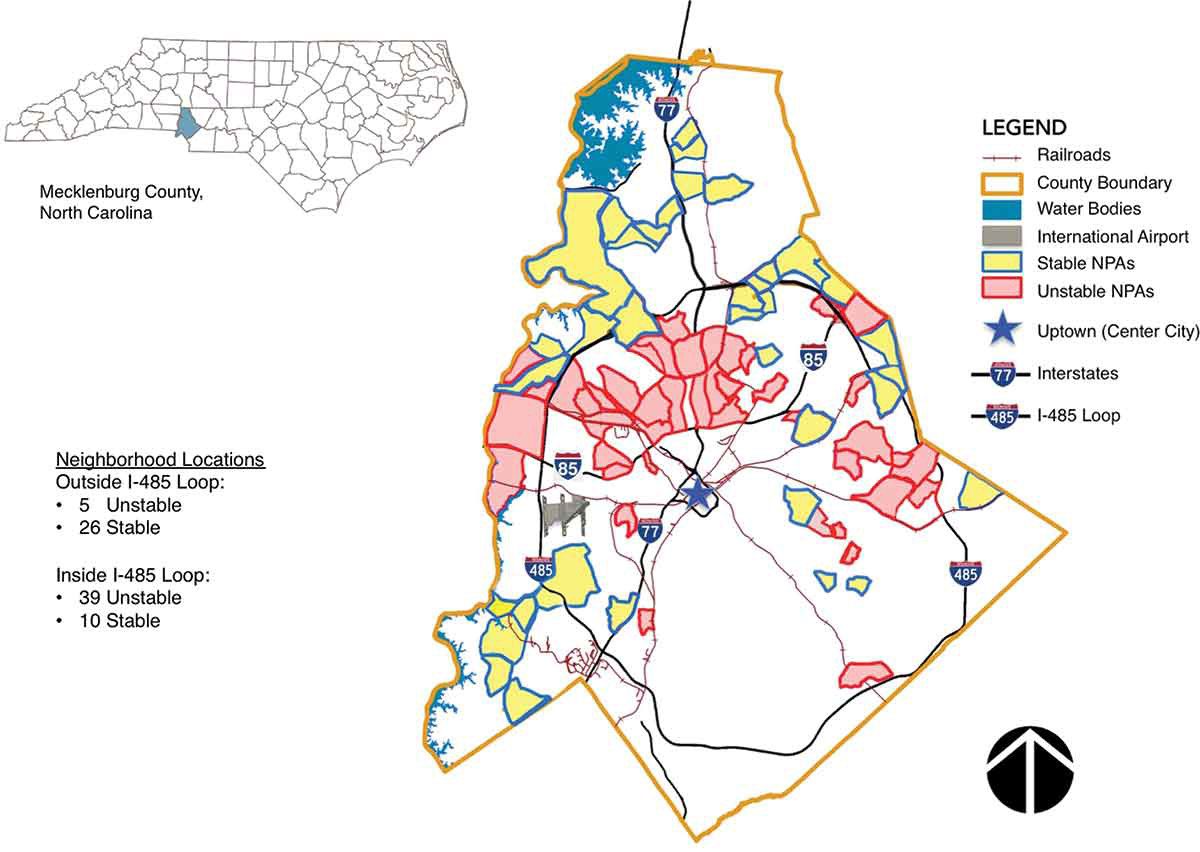 Map shows locations of stable and unstable starter-home subdivisions. Courtesy Melissa Currie, Janni Sorensen
Map shows locations of stable and unstable starter-home subdivisions. Courtesy Melissa Currie, Janni Sorensen